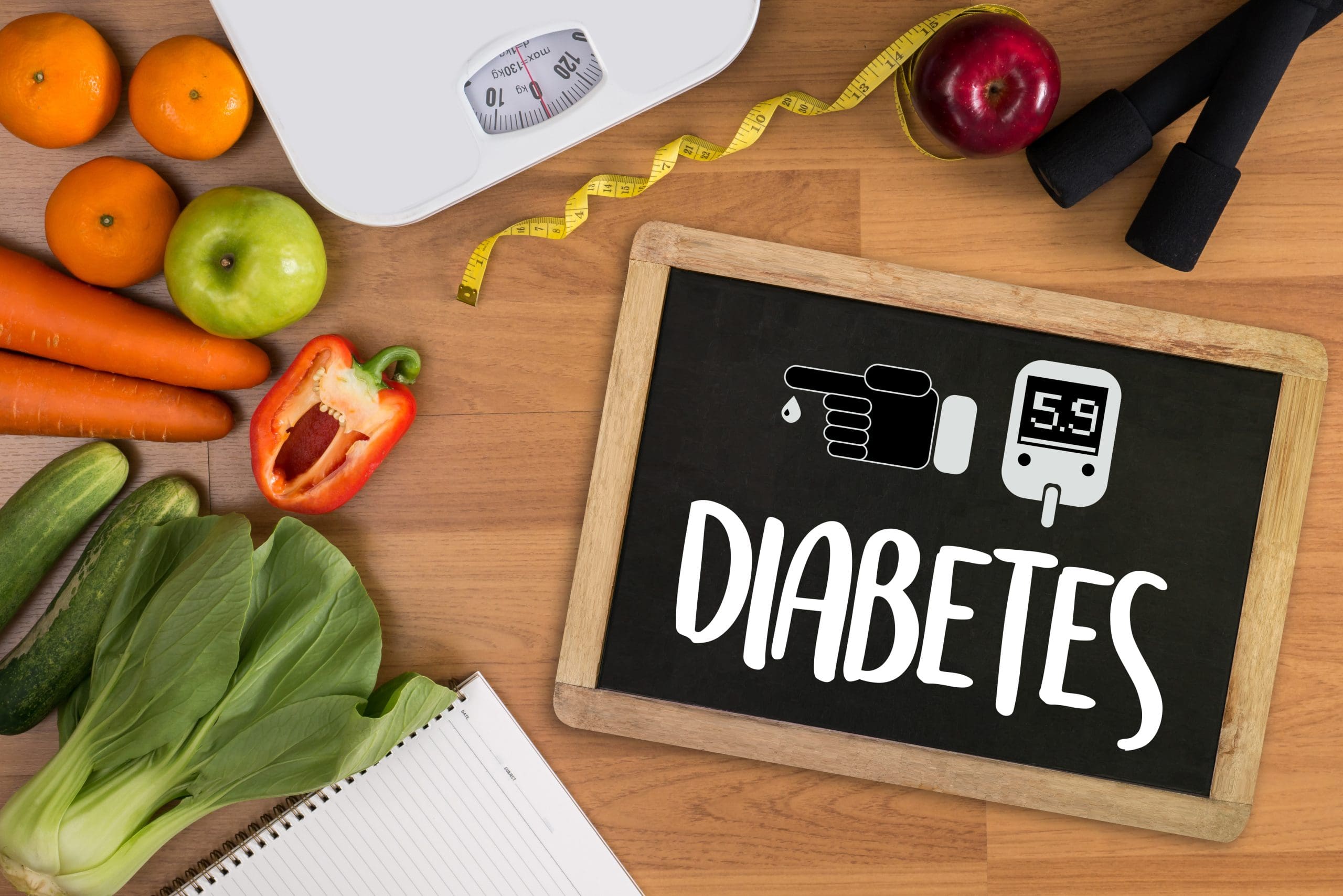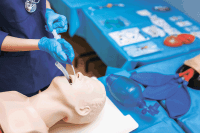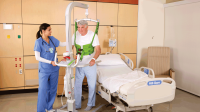THE TOPIC OF CHRONIC ILLNESS management applies to all areas of nursing practice as it is well documented that individuals with pre-existing comorbidities are at a higher risk of developing acute illness and requiring subsequent hospitalization (Mahumud et al., 2020; Martínez-Martínez et al., 2021). One seemingly overlooked chronic illness is diabetes mellitus. Yet, according to the Centers for Disease Control and Prevention (CDC), over 37 million Americans have diabetes, and 96 million have prediabetes (2023). Following the most devastating pandemic to date in our lifetime, COVID-19, a group of nurses in the northeast region of Kansas conducted a qualitative study to gain insight from individuals with diabetes mellitus on their perspective on managing their diabetes during their acute illness with COVID-19. Despite COVID-19 being considered a common illness, with continual variants surfacing that will ebb and flow like the flu, findings from the qualitative study must be shared with all nurses. As with any “new” illness or disease, it is vital that the plan of care is communicated to patients by members of the healthcare team.
Background.
In late 2019, a new strain of coronavirus, severe acute respiratory syndrome coronavirus 2 (SARS-CoV-2), identified as COVID-19, emerged in Wuhan, China, and quickly spread across the globe. On March 11, 2020, COVID-19 was declared by the World Health Organization (WHO) as a global pandemic (Dai et al., 2020; Deeb et al., 2021; Doupis & Avramidis, 2020; Javanmard et al., 2021; Landstra & de Koning, 2021; Martínez-Martínez et al., 2021; Mahumud et al., 2020; Petersen & Jhala, 2022; Zheng et al., 2021). By November 11, 2022, the Kansas Department of Health and Environment declared 894,768 confirmed cases of COVID-19 and 9,652 deaths (Kansas Department of Health and Environment, 2022), and by November 22, 2022, the World Health Organization confirmed 635,229,101 global cases of COVID-19, including 6,602,552 deaths (World Health Organization, 2022). Moreover, it is well documented that individuals with pre-existing comorbidities are at a higher risk of developing acute illness and requiring subsequent hospitalization. In 2020, over 16 million emergency room visits in the United States listed diabetes as a pre-existing chronic condition (CDC, 2022). Diabetes Mellitus was also found to be one of the most prevalent comorbidities in hospitalized COVID-19 patients (Javanmard et al., 2021; Landstra & de Koning, 2021; Lohmann & Wagner, 2020; Mahumud et al., 2020; Martínez-Martínez et al., 2021; Simon et al., 2021). In 2022, diabetes was the eighth leading cause of mortality in the United States (CDC, 2023).
Purpose and significance.
This research aimed to gain insight from individuals with diabetes who had a confirmed case of COVID-19 on how they managed their diabetes mellitus during an acute illness of COVID-19. The findings identified gaps in diabetic education related to diabetic management during COVID-19 illness that may help healthcare providers provide more comprehensive education regarding diabetic management.
Methodology.
Following approval by the Institutional Review Board, this qualitative design sought convenience sampling specific to people with diabetes mellitus in the state of Kansas. Participants received an electronic copy of the informed consent and the questionnaire consisting of demographic data and open-ended questions developed by the researchers. As data was collected, a sample of ten adults was deemed satisfactory as no new data emerged.
Participant Demographics.
Participants were from communities ranging in size from 500 to 400,000 people. Three participants categorized themselves as 45 to 54 years old, three as 55 to 64 years old, two as 35 to 45 years old, and one each as 18 to 24, and 25 to 34 years old. Seven identified as female, and three identified as male. Eight participants identified as white, one as Hispanic, and one as multiracial/Hispanic. Six reported being diagnosed with type 2 diabetes mellitus, three reported being diagnosed with type 1, and one reported being diagnosed with type 1.5. One reported being diagnosed with diabetes mellitus in 2022, and all others reported having diabetes for at least six years at the time of the study.
Findings.
Emerging themes included medications, diet, and continuous glucose monitoring. Most participants reported managing their diabetes the same as they did before having COVID-19. All participants denied being hospitalized during their COVID-19 illness. Five reported they did not have access to resources on how to manage their diabetes during COVID-19 illness. Three participants stated they had resources available through a healthcare provider’s office, and the remaining two reported utilizing internet resources during their acute COVID-19 illness. Perhaps the most concerning theme is that all respondents reported they did not receive information on how to manage their diabetes during their COVID-19 illness, suggesting that there were gaps in education provided to diabetic patients related to the management of their diabetes during the acute course of COVID-19.
Gaining this insight from the perspective of diabetic patients identifies the need for healthcare providers to ensure patient education is provided and understood by those in need of chronic illness management.
Importance to Nursing.
Chronic illness management applies to all areas of nursing practice. Although individuals with well-regulated blood glucose levels are at less risk for complications than those with uncontrolled blood glucose levels (Doupis & Avramidis, 2020; Landstra & de Koning, 2021; Lohmann & Wagner, 2020), all individuals with diabetes mellitus are at an increased risk of developing a severe and potentially life-threatening inflammatory response if they acquire an acute illness compared to individuals who do not have diabetes (Czupryniak et al., 2021; Deeb et al., 2021; Doupis & Avramidis, 2020; Landstra & de Koning, 2021; Mahumud et al., 2020; Simon et al., 2021).
Conclusion.
Healthcare providers are a primary resource for patients with both chronic and acute illnesses and must seek the patient’s understanding of managing their condition during an acute illness. The findings of this research suggest a significant need for healthcare professionals to ensure education is provided to and understood by diabetic patients regarding the impact of an acute illness on their disease management.
References
Centers for Disease Control and Prevention. (2022, February 18). Diabetes: Managing sick days. https://www.cdc.gov/diabetes/managing/flu-sick-days.html
Centers for Disease Control and Prevention. (2022, April 4). Diabetes Fast Facts. https://www.cdc.gov/diabetes/basics/quick-facts.html
Czupryniak, L., Dicker, D., Lehmann, R., Prazny, M., & Schernthaner, G. (2021). The management of type 2 diabetes before, during and after Covid-19 infec-tion: What is the evidence? Cardiovascular Diabetology, 20(198). https://doi.org/10.1186/s12933-021-01389-1
Dai, S.P., Zhao, X., & Wu, J.H. (2020). Effects of comorbidities on the elderly patients with COVID-19: Clinical characteristics of elderly patients infected with COVID-19 from Sichuan, China. J Nutr Health Aging, 25(1), 18-24. https://doi.org/10.1007/s12603-020-1486-1
Deeb, A., Khawaja, K., Sakrani, N., AlAkhras, A., Al Mesabi, A., Trehan, R., Kumar, P.C., Babiker, Z., Nagelkerke, N., & Fru-Nsutebu, E. (2021). Impact of ethnicity and underlying comorbidity on COVID-19 in-hospital mortality: An observational study in Abu Dhabi, UAE. BioMed Research International, 2021. http://doi.org/10.1155/2021/6695707
Doupis, J., & Avramidis, K. (2020). Managing diabetes during the COVID-19 pandemic. European Endocrinology, 16(2), 85-87. https://doi.org/10.17925/EE.2020.16.2.85
Javanmard, S., Mohammadifard, N., Nasirian, M., Vaseghi, G., Heidari, K., Kelidari, B., Changiz T., & Sarrafzadegan, N. (2021). Noncommunicable disease, clinical course, and COVID-19 prognosis: Results based on I-CORE registry. East Mediterr Health J., 27(11), 1036-1044. https://doi.org/10.26719/emhj.21.052
Kansas Department of Health and Environment. (2022, November 11). KDHE COVID-19 Cases in Kansas. https://www.coronavirus.kdheks.gov/160/COVID-19-in-Kansas
Landstra, C.P. & de Koning, E.J. (2021). COVID-19 and Diabetes: Understanding the interrelationship and risks for a severe course. Frontiers in Endocri-nology, 12(649525). https://doi.org/10.3389/fendo.2021.649525
Lohmann, T.P., & Wagner, M.C. (2020). Hyperglycemia associated with hospitalization for severe COVID-19 infection. Medical Laboratory Observer. https://www.mlo-online.com/continuing-education/article/21158867/hyperglycemia-associated-with-hospitalization-for-severe-covid19-infection
Mahumud, R.A., Kamara, J.K., & Renzaho, A.M. (2020). The epidemiological burden and overall distribution of chronic comorbidities in coronavirus dis-ease-2019 among 202,005 infected patients: Evidence from a systematic review and meta-analysis. Springer Nature, 48, 813-833. http://doi.org/10.1007/s15010-020-01502-8
Martínez-Martínez, O. A., Valenzuela-Moreno, K. A., & Coutiño, B. (2021). Effect of comorbidities and risk conditions on death from COVID-19 in migrants in Mexico. International journal for equity in health, 20(1), 257. https://doi.org/10.1186/s12939-021-01599-9
Petersen, J., & Jhala, D. (2022). Practical risk scoring system for predicting severity of COVID- 19 disease. Clinical Pathology, 15, 1-6. http://doi.org/10.1177/2632010X211068427
Simon, M., Pizzorno, J., & Katzinger, J. (2021). Modifiable risk factors for SARS-CoV-2. Integrative Medicine, 20(5), 8-14.
World Health Organization. (2022, February 6) WHO Coronavirus (COVID-19) dashboard. https://covid19.who.int/
Zheng, B., Cai, Y., Lin, M., Zheng, J., Chen, W., Qin, G., & Guo, Y. (2021). An interpretable model-based prediction of severity and crucial factors in patients with COVID-19. BioMed Research International, 2021, 1-9. https://doi.org/10.1155/2021/8840835

























